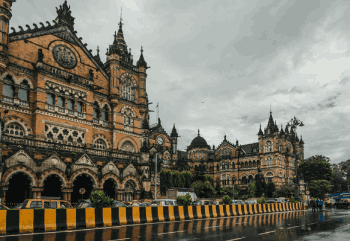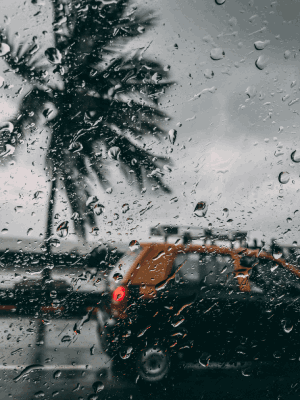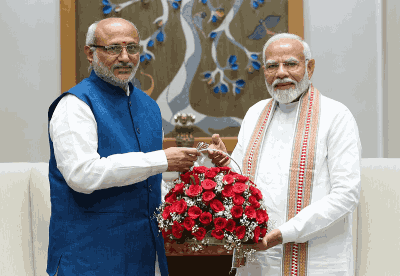The bustling metropolis of Mumbai is grappling with one of its most severe monsoon episodes in August 2025, as torrential downpours continue to lash India’s financial capital. The city witnessed an extraordinary deluge on Monday, August 18, receiving a staggering 177 millimeters of precipitation within just eight hours, prompting authorities to declare emergency measures and issue safety warnings to millions of residents.
Intense Weather Conditions Paralyze Daily Life
Mumbai’s weather patterns took a dramatic turn as meteorological conditions deteriorated rapidly throughout the day. The India Meteorological Department escalated its warning system to a red alert, the highest category on its emergency scale, indicating extremely heavy precipitation and potentially dangerous weather phenomena. Areas including Vikhroli recorded 135mm, Chembur experienced 124mm, while Santacruz and Juhu neighborhoods bore the brunt of 123mm rainfall in a matter of hours.
The unprecedented water accumulation transformed busy streets into temporary rivers, with waterlogging reaching alarming depths across multiple districts. Kalpak Naka witnessed standing water of approximately two feet, while the Mankhurd Tunnel became virtually impassable with water levels reaching 10-15 feet in certain sections. The Andheri Subway and Lokhandwala complex faced complete submersion, forcing immediate road closures and traffic diversions.
Transportation infrastructure across the megacity experienced significant disruption as the relentless precipitation overwhelmed drainage systems. The Western Express Highway, one of Mumbai’s primary arterial routes, saw massive traffic snarls extending for kilometers. King Circle and numerous other crucial junctions became bottlenecks as commuters struggled to navigate waterlogged thoroughfares. The suburban railway network, often referred to as Mumbai’s lifeline, reported delays ranging from 10 to 20 minutes across multiple corridors, though services continued operating with reduced frequency.
Aviation operations at Chhatrapati Shivaji Maharaj International Airport faced considerable challenges, with several aircraft executing go-around procedures due to adverse weather conditions. Multiple flights experienced diversions to alternative airports in neighboring cities, affecting thousands of passengers and causing widespread schedule disruptions throughout the regional air traffic network.
Educational Institutions and Administrative Response
Recognizing the severity of meteorological conditions and prioritizing public safety, the Brihanmumbai Municipal Corporation made the prudent decision to suspend operations at all educational establishments on August 19. Schools, colleges, and universities across the metropolitan region will remain closed as a precautionary measure, allowing families to avoid unnecessary exposure to hazardous travel conditions.
Corporate offices received official recommendations to facilitate early departures for employees, enabling safer commutes before evening rush hour coincides with potentially worsening weather patterns. Emergency response teams, including the National Disaster Response Force, Mumbai Police, and military personnel, have been deployed across vulnerable zones to assist stranded citizens and conduct rescue operations where necessary.
A particularly noteworthy incident occurred in Matunga, where swift police intervention successfully evacuated schoolchildren from buses trapped in rising floodwaters, demonstrating the critical importance of coordinated emergency response during extreme weather events.
Extended Forecast and Continuing Concerns
Meteorological projections indicate that the current spell of intense precipitation is far from over, with the IMD forecasting sustained heavy rainfall for at least three consecutive days. Approximately half of Maharashtra state, including the greater Mumbai metropolitan area, remains under red or orange alert status through August 21, suggesting continued challenging conditions for residents and businesses alike.
Coastal areas face additional threats from high tide warnings, with water levels expected to reach 3-4 meters after 6:30 PM, potentially exacerbating existing flooding situations in low-lying neighborhoods. The convergence of heavy rainfall and elevated tide levels creates a particularly dangerous scenario for communities situated near the Arabian Sea coastline.
The agricultural sector across Maharashtra has suffered significant losses, with preliminary assessments indicating crop damage across approximately 400,000 hectares. State authorities are currently evaluating relief measures and compensation packages for affected farming communities whose livelihoods depend on successful monsoon seasons.
Historical Context and Seasonal Patterns
Mumbai typically receives between 300-350 millimeters of precipitation during August, making it one of the wettest months in the annual monsoon cycle. However, current rainfall measurements are tracking significantly above historical averages, with meteorologists expecting more than 20 rainy days throughout the month. Temperature ranges remain relatively stable between 25°C and 28°C, though humidity levels consistently exceed 85%, creating uncomfortable conditions for outdoor activities.
The monsoon phenomenon plays a crucial role in India’s agricultural economy and water resource management, but extreme precipitation events like those currently affecting Mumbai highlight the challenges faced by urban infrastructure in managing sudden water accumulation. The city’s drainage systems, despite ongoing improvements and modernization efforts, continue to struggle with the volume and intensity of contemporary weather patterns.
Safety Recommendations and Preparedness Measures
Municipal authorities and meteorological experts strongly advise residents to minimize outdoor activities during red and orange alert periods. Citizens should maintain charged communication devices and keep emergency contact information readily accessible. Vehicular movement through waterlogged areas should be avoided entirely, with commuters encouraged to seek alternative routes or postpone non-essential travel.
Public transportation users are urged to monitor official updates regarding bus route modifications and railway schedule changes. Social media platforms and official government channels provide real-time information about service disruptions and restoration timelines.
Residents in flood-prone localities should consider relocating valuable possessions to elevated areas and maintain emergency supplies including drinking water, non-perishable food items, and essential medications. Community preparedness and neighborhood cooperation become particularly important during extended periods of adverse weather conditions.
Mumbai’s monsoon challenges of August 2025 serve as a powerful reminder of nature’s force and the importance of urban resilience planning. While the city demonstrates remarkable adaptability and community spirit during such crises, the current situation underscores the ongoing need for infrastructure development and climate adaptation strategies. Residents are encouraged to stay informed through official channels, exercise caution in their daily activities, and support one another through these challenging meteorological conditions until normal weather patterns resume.
Stay updated with the latest Mumbai weather alerts, monsoon news, and safety advisories through official BMC notifications and IMD bulletins.







